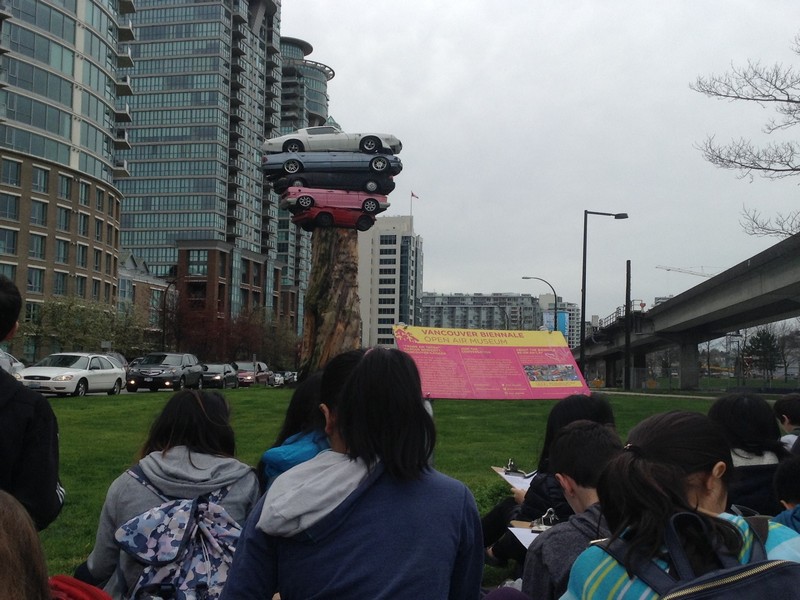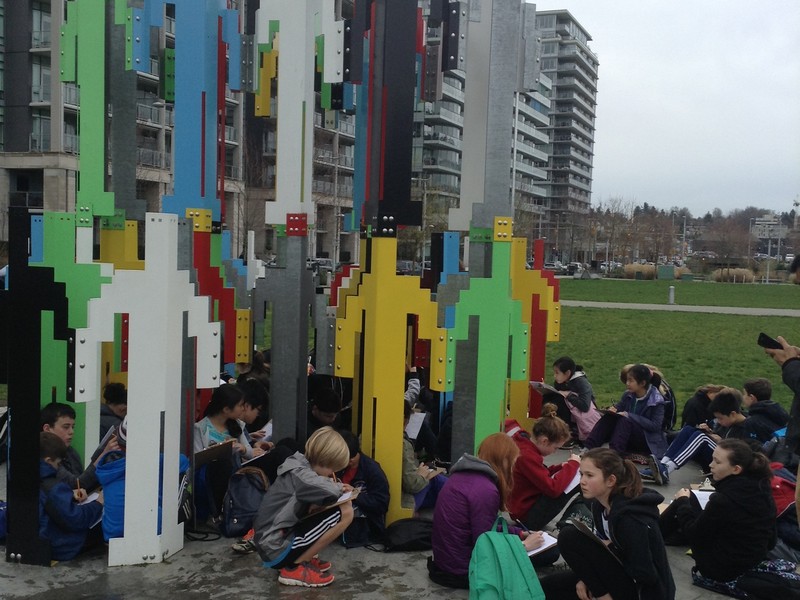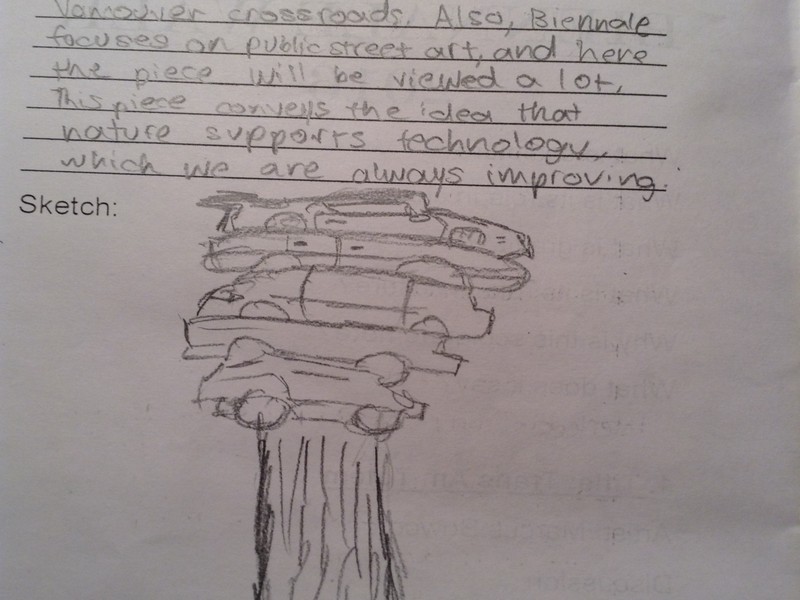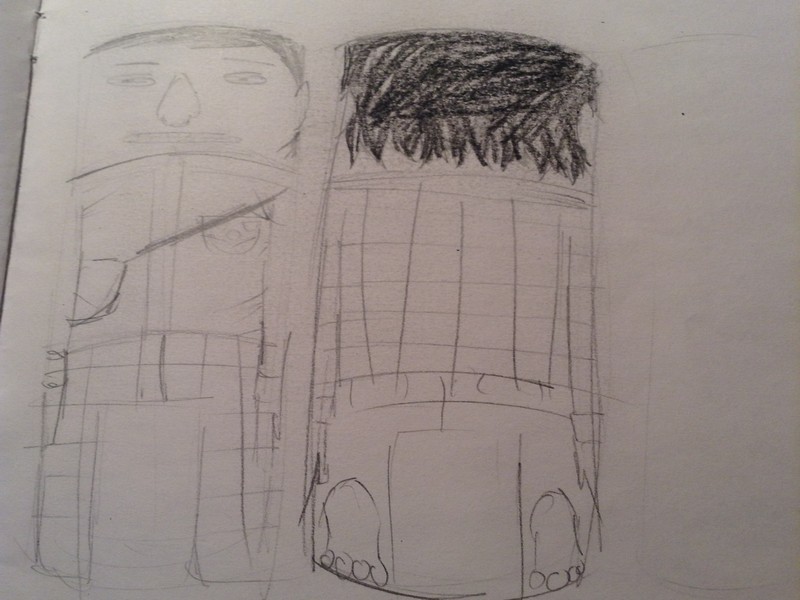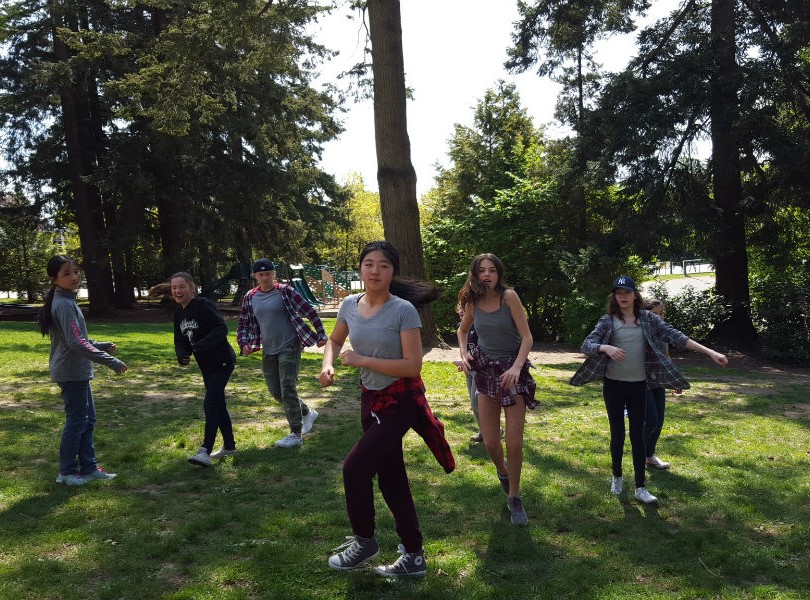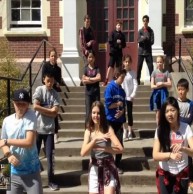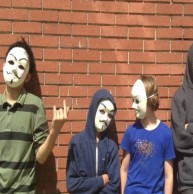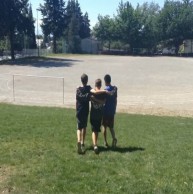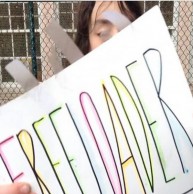Kerrisdale Elementary: Art and Evolution
Arts Education, Health and Career Education, Language Arts, Science, Social Studies
School: Kerrisdale Elementary
Teacher: Jane Spencer and Alison Dixon
Artist Collaborators: Gordon Cobb
Class: Grade 6 and 7
Overview
This project is an inquiry into how evolution and change are inevitable and how our decisions as individuals, and as humanity, can make a difference. Students created a mixed media installation expressing their understanding of evolution on a variety of scales from the evolution of self, to society, to the world.
Connection to the Vancouver Biennale Exhibition
Students visited Jonathan Borofsky’s Human Structures, Marcus Bowcott’s Trans am Totem, Cosimo Cavallaro’s Love your beans and OSGEMEOS’ Giants in Vancouver to explore the notion of humanity working and building together.
Prior to the visit, students did an audio tour to look at press coverage on the Biennale website. Teachers also focused their inquiry into the history of the sculpture created for the Biennale.
Students connected their experience to prior classroom lessons focused around taking a historical approach to modern art and on the idea of the artists questioning the role of art in modern culture. Teachers aimed to draw attention to how artists both mirror and magnify modern culture forcing humanity to question its trajectory as individuals and as a culture. By studying and viewing art through the Biennale Exhibition, the teachers aimed for students to realize the diversity of formats they have at their disposal to express their ideas, as well as the “language” used by other artists.
BIG IDEAS
Evolution and change are inevitable and tightly connected to the human experience.
Our decisions as individuals, and as humanity will make an impact on our surroundings.
Guiding Questions
- How does art shape and reflect our decision making process?
- As artists, how can we inform and influence the decision making process in others?
Cross-Curricular Access
Students created a personal piece of writing demonstrating their understanding of literary techniques (simile, metaphor, figurative language) to make a connection with their audience.
Students created multiple visual studies using ipads to model various ways to convey meaning in media. (Subjects from Health and Career, Science and Social Studies.)
Students practiced their hand at critiquing art in order to build awareness of the means through which other artists have approached meaning making.
Inquiry Challenges
Art criticism: description, analysis, interpretation, judging
Students explored the elements of art.
Students explored sculpture and street art connecting these mediums to evolutionary processes, considered multiple interpretations and questioned the impact of scale.
Language Arts: Exploration of social justice issues through novel study.
Students analyzed the personal changes or “evolution” documented in the protagonists of their novels.
Students sought to understand the universal message being investigated by the author.
Teachers posed the question: How do novels help us to better understand ourselves and each other?
Students inquired into how their writing could help bring greater self-awareness to their own evolutionary process.
Social Studies: Impact of artworks being incorporated into environment.
Teachers posed the inquiry question: Why are the Biennale sculptures placed where they are?
Students investigated how these sculptures shape their understanding of themselves, their city, and their place in the world.
Health and Career: Mindfulness.
Students were encouraged to become more mindful of the messages they are projecting unconsciously towards themselves and their environment (awareness of open and closed body language as well as positive and negative thoughts).
Science: Balanced vs. imbalanced ecosystems, care for the environment.
Teachers promoted awareness of climate change and human impact, connecting this awareness to Vancouver’s initiative to become a “green” city.
Students explored how they can facilitate positive change in their community.
Learning Process/Timeline
Students began the project by meeting and working with the artist facilitator, Gordon Cobb. He introduced the idea of making music videos to express an idea and create positive change.
The lessons that followed focused on brainstorming ideas, creating groups with defined roles and writing songs. The artist aided the students hugely by meeting with each group individually and working on counting beats, writing songs and encouraging the students ideas. The students got to record their songs with the artist when they were ready. Each student was involved in the process.
Students then created their music videos for the songs they had recorded. They were given lots of time to explore different photography shots, and work with new technology. The students worked in groups and ensured that every student played an important role in the creation of the video.
Student Creation
Students had the option of choosing the scale of the evolution they wished to express. Their focus could be personal, historical, local or worldwide. They were able to portray an interior journey or a journey through time.
Student creations could present the construction of cross cultural understanding, or alternatively, they were able to document a growing understanding of the evolution of Canadian nationhood.
Students were asked to create a mixed media installation music video demonstrating an evolutionary process with a universal message. Final artwork aimed to demonstrate student understanding of multiple literacies (literary, media, oral, visual) and their different roles in conveying meaning.
The music videos were created entirely by the student groups and they were displayed during a “movie time” presentation with other classes. They were also shown during a parent night so the parents got to see the artwork created by the students.
Reflection
Teacher – Jane Spencer
According to the new BC curriculum, the creative thinking competency involves the generation of new ideas that have value for the individual and others. As teachers, Ms. Dixon and myself prepare students with a number of activities.
In Socials and Science we ask, “What can you connect this to? What does it remind you of? In writing we ask for a summarizing sentence putting the writing in context. In Health and Career students have created Mandalas to help them understand themselves and their place in the world. We have talked about open and closed body language. We have practiced art and video analysis. We know the difference between simple and complex sentences and the opportunity for rhythm and power they possess. We have asked questions about First Nation’s schools and researched the answers. We have created I-movies to demonstrate the interaction of layers of meaning built up with words, images and music. We have created collages on the theme of evolution, change and what decisions we make at the crossroads. All of this so our students understand the power of art and media to connect us together, to find common understandings, and a vision of the future.
Our project for the Vancouver Biennale this year, completed with the amazingly efficient and flexible Gordon Cobb, consisted of the creation of music videos on the theme of change. Students worked in teams of 15 to:write lyrics, compose music using Garage Band, choreograph and perform dance moves, and video and edit using Imovie.
Students were assigned roles according to their abilities, and the majority valued their contributions to the whole. I think the music videos produced by the 4 groups, while perhaps lacking a certain polish, help us to understand their perspective on School, Stereotypes, Growing Up and Breaking Free.
